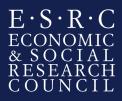International Collaborators

Conference of district, city and factory committee secretaries, Murmansk province (1956)
The following is a list of national and international scholars who are pursuing research on related themes and who have agreed to have details of their projects posted on this site:
UK
Our work has involved close collaboration with Melanie Ilic, Jeremy Smith and R.W. Davies, all of CREES, the University of Birmingham, who are the organizers of an Arts and Humanities Research Council (AHRC)-funded project on “Policy and Governance in the Soviet Union under Nikita Khrushchev” (2005-2008).That project also has a strong regional dimension, albeit with a greater accent on the economic aspect of centre-periphery relations. We have also be collaborated with Catriona Kelly, who is running a major AHRC-funded international project on “Russian National Identity Since 1961: Traditions and Deterritorialization” (2007-2010). Also in the UK, Mark Harrison of the Economics Department at the University of Warwick is carrying out research on networks, secrecy and the evolution of hierarchical and command structures under Stalin and beyond (see also Soviet Archives Research Project). At the University of Sheffield, Miriam Dobson’s current projects on prisoner releases after Stalin and on religious faith in post-war Russia both have a strong regional dimension, with research centring on Moscow, Vladimir and Cheliabinsk.
US
The project has linked up with a number of graduate students and junior Faculty in the United States with whom we have shared documents and information. At the University of Chicago, Alan Barenberg is currently looking at how former prisoners and prison camp officials were integrated into the new social, economic, and political order of the Komi region from the 1950s to the 1970s. At The Centre for Urban History in Lviv, Tarik Cyril Amar is addressing the making of a Soviet “Lviv” out of former “Lwow” in western Ukraine between 1939 and the 1960s. Cynthia Hooper at the College of the Holy Cross, is currently working on a book on "Terror From Within: Collaboration and Coercion in Soviet Power, 1924-1964" which looks at how those inside the Soviet repressive apparatus evaluated their own and their colleagues' actions in a number of regions. At Princeton, Pei-Yi Chu is examining the construction of the Baikal-Amur Mainline and the geopolitical and environmental dimensions of post-war development in East Siberia and the Soviet Far East; and Jeffrey Hardy, who focuses on penal policy and practice under Khrushchev, has explored the fall of Dalstroi in Magadan Province and is currently expanding the geographical scope of his project to include other parts of the Soviet Union. At Harvard, Eren Murat Tasar is writing a Doctorate on "Muslim Life in Central Asia, 1943-85" which examines republican and sub-republican aspects of religious life over this period.
In addition we continue to collaborate with a number of scholars who have played an important role on the project since its inception. At Harvard, Terry Martin, in addition to his previous research on nationality relations in the Soviet Union under Stalin, has been carrying out research on the role of information in the institutional development of the Soviet system. At Stanford, Amir Weiner is conducting research on centre-periphery relations, including patron-client relations, with special reference to the Western borderlands in his project entitled “Wild West, Window to the West: Russia’s Western Frontier, 1934 to the Present.” At the University of Indiana, Hiroaki Kuromiya is conducting work on “The Political Leaders of Ukraine, 1938-1989” together with Yuri Shapoval, Valerii Vasil'ev, Roman Podkur.
Russia and Ukraine
Apart from the co-director (Oleg Khlevniuk) and the four chief research collaborators (Viktor Kondrashin, Olga Nikonova, Valery Vasilev and Roman Podkur), Vladimir Gelman of the European University in St. Petersburg has been carrying out work on the post-Soviet Russian regions. His approach, which focuses on the structure of Russian regional elites, has strong parallels with the approach used in this project, and as such should provide an important benchmark and point of comparison for our work on the earlier period.

